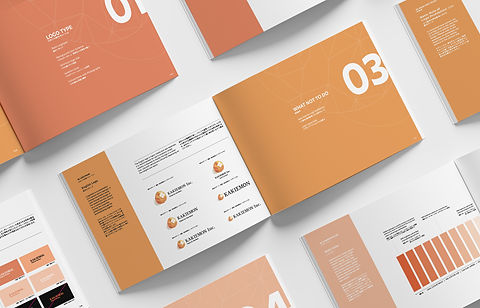

Brand Story
ブランドストーリー
KAKIEMON has set 'stained glass' and 'kintsugi' as motifs for the brand in order to visualise the feelings towards the brand.
The brand motifs are "stained glass" and "gold-plated" and are reflected in the design. We consider this as a form of communication that differentiates the company and the brand and allows for a clear understanding of the thoughts and direction of the brand both inside and outside the company.
KAKIEMONでは、ブランドに対する想いを可視化するためにブランドのモチーフとして「ステンドグラス」と「金継ぎ」を設定し、デザインに反映させています。企業やブランドを差別化し、想いや方向性をはっきり内外で認識し合うことができるコミュニケーションの一つと考えています。
Conflict with
New Technologies &Times
新技術や時代との対立
stained glass.
Around the 9th century, stained glass was born in Europe.
Expensive ornamental glass became casual with the development of technology, and then stained glass, the most representative expression of the period. It reached its peak between the 11th and 15th centuries with the development of industry, technology and tools, and Gothic architecture,
Stained glass declined because of the growing realism of painting and the popularity of realistic expression. Enamel colourants, essential for realistic expression, were used in stained glass. This was due to the fact that works were produced that did not make use of the transparency inherent in glass and that black lines became a necessary evil. From there, it took several hundred years for technical innovations and the penetration of new artists' ideas to revive the value of stained glass. Both the pursuit of realistic expression and the restoration efforts hundreds of years later must have been a courageous challenge for the state-of-the-art. The continuing evolution of stained glass as a traditional technique and as a great art form should tell us about new techniques, trendy expressions and the need to search for the right answer with the times.
ステンドグラス
約1500年前、9世紀ごろステンドグラスのベースがヨーロッパで誕生しました。ガラスは高価な装飾品でしたが、技術の発展とともに窓ガラスなどの機能的なものに変化し、時代の表現方法の一部、ステンドグラスへと昇華していきました。そして11〜15世紀、金属やガラス産業の発展、表現技法の多様化、道具や塗料などの進化、ゴシック建築とともに成熟期を迎えたのです。
そんなステンドグラスが衰退したのは、絵画の写実主義の強まりと、それによるリアルな表現の流行に取り込まれたためです。写実表現には欠かせない、細かい表現に適したエナメル着色剤がステンドグラスに用いられました。ガラス特有の透明性を生かせない作品が作られたり、写実的な表現に固執した結果なまり線(黒い線)が必要悪になってしまったことなどが原因でステンドグラスは衰退期に入ってしまいました。そこから技術革新や新しい芸術家の考えの浸透によって、ステンドグラスの価値やレベルが復活するまでに数百年を必要としました。中世の手仕事に還り、生活と芸術を統一しようと主張をしたアーツアンドクラフツ運動や19世紀末にはティファニー家の2代目にあたるルイスが宝石商の家業を継がずその眼を生かし、室内装飾家としてガラス芸術家として飛躍したのもきっかけの一つです。
写実表現の追求も、その数百年後の運動も、その時代の技術や流れを汲んだ最先端の勇気あるチャレンジであったはずです。ステンドグラスが今日に至るまで伝統の技術として、そして素晴らしいアートとして進化を続けていることは、新しい技術や流行の表現、大きくいえば時代と共に正解を探していくことの必要性を教えてくれるはずです。

Not too afraid to adopt New Perspectives
新しい目線を取り入れることを恐れすぎない
Kintsugi
Kintsugi was born in Japan 400 years ago. It was born out of a desire to cherish and use tableware for a long time and as a technique for repairing broken items.Recently, kintsugi has attracted a great deal of attention abroad. It has been accepted as a beautiful art form, and as a way of using tableware that had previously only been displayed because of the fear of breaking it. The Japanese mindset of using things with care and expressing them as art was highly regarded. Various overseas artists used kintsugi for their own expression. If kintsugi had only been used in Japan, it would have ended up as just another technique at a time of evolution and change. It would not have attracted so much attention. The addition of foreign appreciation and the opinions and values of other viewpoints led to a kintsugi boom in Japan, which was imported back into the country. It could be said that this was an opportunity for the Japanese people to learn about Japanese technology once again and to feel proud of it.
金継ぎ
茶の湯の時代、400年前から日本で始まった金継ぎという技術。当時は、器を大切に長く使いたい気持ちと、あくまで壊れたもの直す技術として生み出されたものでした。
近年、この金継ぎという技術が海外で大きく注目されました。「食器棚の中で眠っている壊すのが怖くて使えなかった食器をこれで使える」「金継ぎ表現は美しいアートだ」と受け入れられたのです。モノを大切に使う日本人の心と、アートとしての表現が評価され、海外の様々なアーティストが自分の表現に取り込みました。
日本の中だけでもし、金継ぎが完結していたら、大量生産の過程や、洋風化の加速、様々なタイミングでただの技術の一つとしてここまで大きく注目されることはなかったかもしれません。海外の評価や、違った目線からの意見や価値観が加わったことにより、日本では和食器のブームや金継ぎ体験のブームが起きました。日本人が改めて日本の技術を知り、誇りに思うきっかけになったと言えるのではないでしょうか。

'Form' but not 'thought' should not be changed.
「形」を変えながら、「想い」は変えない。
Things and things change with new technologies, ideas and times. We have to accept that if we keep doing the same thing, it is natural that we will clash with technology, people and the times. KAKIEMON wants to discover new ways to survive into the next era and new discoveries by taking in other perspectives.
We will sort out what should and should not be left behind, and find the core of the brand. We will bring in the financial and other professionals necessary to do this, and continue to protect the 'company' and 'ideas'.
新技術やアイデア、時代によってモノやコトは変わっていきます。 同じことをやり続けていたらいつか必ず遅かれ早かれ、技術や人や時代とぶつかるのはあたりまえ、ということを受け入れそこで「残す」ためにできることとは何か、外部の目線を取り入れることで新たに気づく部分とは
何かを共に考えたいとKAKIIEMONは考えています。
残すべきものと残さなくていいものを整理し、ブランドの核を見つけること、そして見つけた後、より良い存続に必要な金融をはじめとするプロフェッショナルを迎え、「企業」と「想い」を守り続けます。
